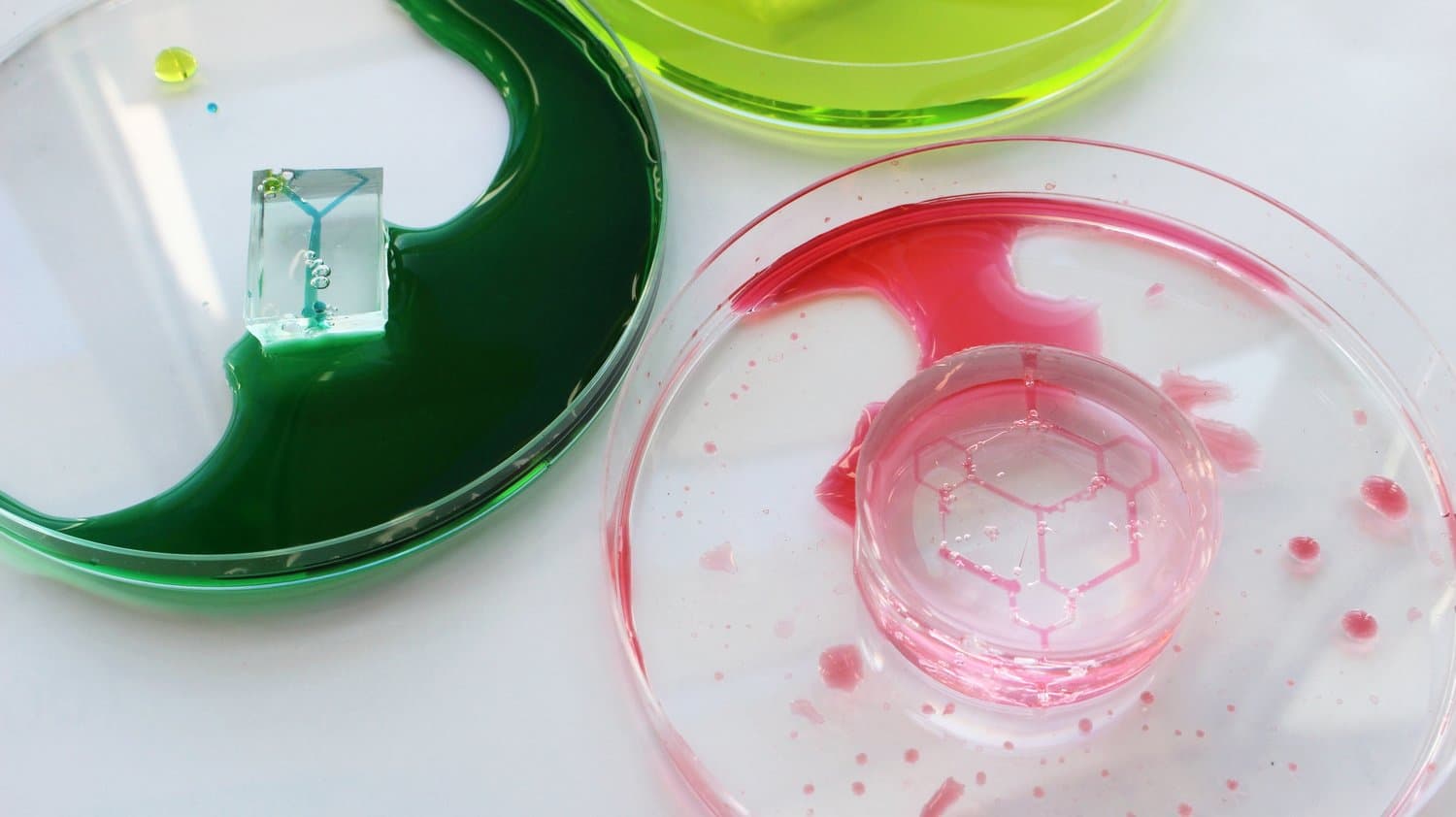
- About Allevi
- Bioprinters
- BioinksAdditivesAdditivesBioinksAdditivesAdditivesAdditivesAdditivesAdditivesAdditives
- Software
- Services
- Resources
- Support
Menu

Organ-on-a-chip has proven to be an extremely valuable technology utilized for disease modeling, drug testing and mimicking organ function. Each individual organ-on-chip is composed of a clear flexible polymer (see above) that contains hollow microfluidic channels. By creating artificial vasculature within the chip and applying mechanical forces to the construct – you are able to mimic the microenvironment of the organ. Researchers have even figured out how to mimic breathing in the lungs and the contractions of the intestine within these tiny devices. Because the microdevices are translucent, they provide a window into the inner workings of human organs and how organs interact with each other.
This technology, which was first developed at the Wyss Institute in 2010, is gaining traction in the fields of disease modeling and drug development. Researchers are able to see the reaction of a drug as it moves through the different organ systems, and even see how these organs interact with each other under the influence of a new drug. There is hope, as this technology becomes more widely adopted, that organ-on-a-chip will completely replace the use of animal testing in pharmaceutical development. And further, there is a dream to include patient-specific stem cells to see how each individual will react to a drug before introducing it to human trials.
The Allevi organ-on-a-chip protocol allows you to build structures with controlled inner and outer geometries for liquid perfusion that can simulate blood flow and re-create organ systems. The chips which are cast in PDMS are made out of a sacrificial material, carbohydrate glass by Volumetric Inc and featured in Nature Materials, that can be printed in any 3D structure. Final prototypes can be autoclaved, seeded with cells and connected to pumps or bioreactors for different 3D studies.
With this new protocol, you are now about to print custom 3D microfluidic devices in your lab. We can’t wait to see what you will create.
Check out the Organ-on-a-Chip protocol and get started today.